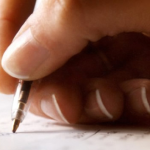If you like running, Fitness Together Point Loma has the perfect article to share with you! Fitness Together Point Loma can help get you back into running shape and avoid major injuries by this high impact exercise.
By Jeff Erickson, PT, MPT
Spring is upon us and that means that more people will be heading outdoors to go running. There’s nothing better for the mind and body than exercise, especially when it’s outdoors. However, avid runners are prone to overuse injuries that can hinder performance and possibly stop it altogether. Here are a few helpful hints that will help to keep you running throughout the warm weather months.
Injuries in runners generally occur in the legs and low back. The following are the most common along with some tips on how to prevent them from happening to you.
Low Back Pain- Eight out of ten Americans suffer from this. Running uphill for too great a distance can contribute to this because the torso will be swayed back into an uncompromising position. Running on uneven or hard surfaces can also cause back pain. Uneven surfaces cause asymmetrical forces on the lower back region while hard surfaces increase stress on the area due to increased force of impact on the ground.
* TIPS*
1. Run with proper trunk posture
2. Run on soft, even, dirt track with short, intermittent hills
3. Increase abdominal, back and leg strength to support low back
4. Stretch all trunk and leg muscles to prevent strains and tears
Hip or Buttock Pain:
1. Trochanteric (hip) Bursitis- This can result from increased stress to the outside of the hip as runners tend to overuse the muscles due to the one-legged stance
2. Piriformis Syndrome- The piriformis is one of the deep rotators of the hip. If this is tight, it can cause pain and increased pressure on the sciatic nerve as well as shooting pain down the leg.
* TIP*
STRETCH! Specific stretches are the ITB and piriformis illustrated at end of article
Anterior Knee Pain- This is common in most athletes, especially teenage girls. It is often due to poor body mechanics, faulty muscular strength, or poor muscle flexibility. This creates an abnormal tracking of the knee cap in the groove of the knee. This is usually easy to cure, but may require physical therapy or even surgery.
* TIP*
You should see a doctor to determine the best treatment options
Iliotibial Band (ITB) Friction Syndrome- This is lateral knee pain along the outside of the knee down past the knee. The one-legged stance in runners causes increased tightening of the ITB and will cause friction between it and the bony protuberances of the knee.
* TIP*
Again STRETCH that ITB!
Shin Splints- This is pain in the front of the shins. It is debatable what causes this but one factor is usually tight calf muscles, especially the soleus. Many hills can be the culprit of tight calves.
* TIPS*
1. Stretch the gastroc and soleus muscles
2. Monitor and modify hill training
Ankle Sprains- Usually caused by turning the ankle on a curved or uneven surface.
* TIPS*
1. Strengthen ankles
2. An ankle brace/support may help if you are prone to sprains
Asymmetrical Pain- Pain in one sector of the back or one leg vs the other probably means you are running on uneven surfaces. Many runners run on the crown of the road, so if you are always on the right side of the road, the left foot lands with the inside down and the right with the outside down.
* TIPS*
1. Find a flat surface to run on
In general, because of the repetitive pounding, battling elements, and the nature of runners to push themselves beyond limits, injuries will occur. Many of these injures start slowly and gradually become worse. Often there is not a specific cause of injury, which causes them to be overlooked until the pain limits activity.
The best prevention is to address pain when it first starts. To cure it, you may only need to do a few simple stretches, strengthening exercises, or maybe just changing running surfaces. However, at the onset of pain, if it is significant and lasts for at least a week, consult a physician.
Other Common Causes of Pain
Improper Footwear
Increasing intensity or distances too quickly
Running while sick or fatigued
* Final Tips *
1. Watch the Weather
-hypo vs hypotension
2. Wear Proper Clothing
-light, breathable material for proper sweat evaporation
3. Maintain Proper Fluid Intake
-drink water even before you feel thirsty
-sports drinks are fine
-don’t take salt tablets
4. Don’t be Overzealous
-don’t do too much too soon
-keep pace and distance to an achievable level
5. Stretch
-take the time to stretch every time you run
6. Wear Proper Sneakers
-you may need to be evaluated by a PT for this
-good sneakers vs orthotics
7. Enjoy and Don’t Push too Hard





